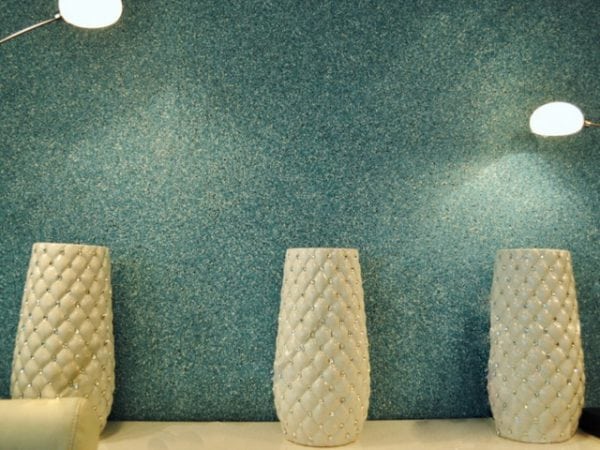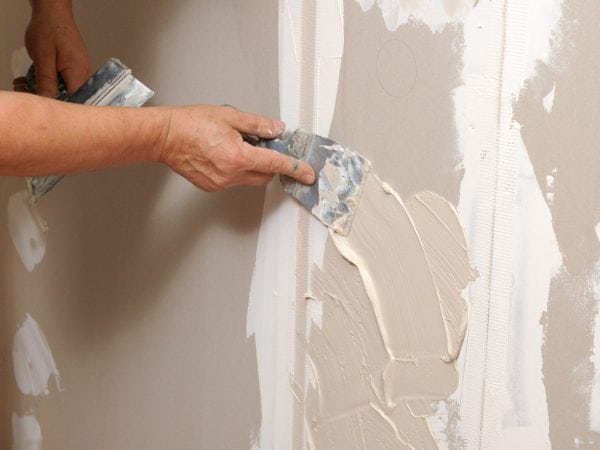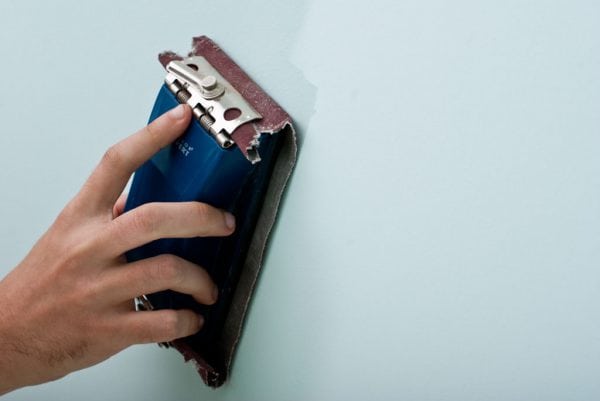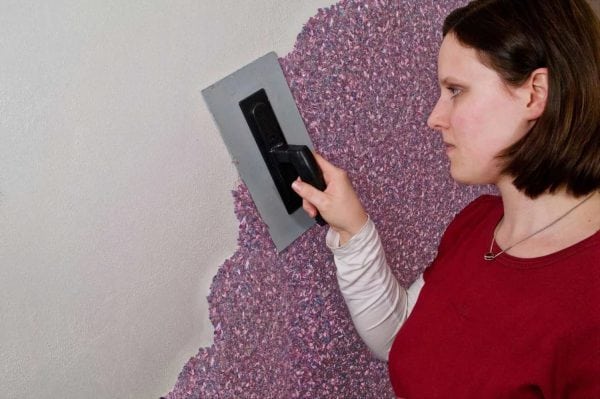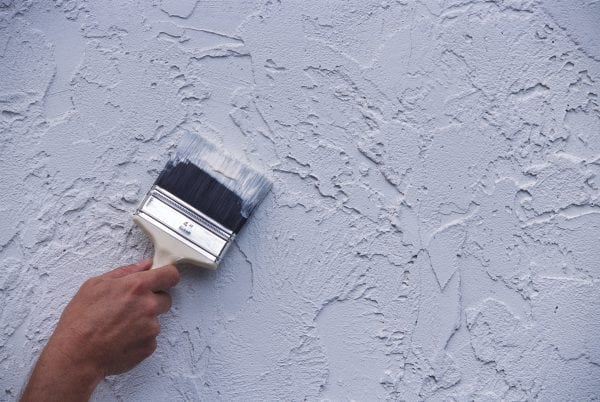To find out whether it is possible to apply liquid wallpaper to paint, you must first consider all the features of using liquid wallpaper.
- Perfect surface for liquid wallpaper
- What to do if paint cannot be removed
- Finishing process
- How to paint walls with liquid wallpaper
- What can be painted
- Tips from professionals
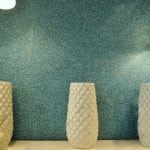
For the manufacture of this finishing material, the following components are used:
- cellulose base;
- antifungal agents;
- pigment;
- binder fibers;
- mica;
- mineral chips;
- plasticizers;
- nacre.
Some of the ingredients can be added in the amount that is required in a particular case.
Material is classified into:
- silk;
- cellulose;
- mixed wallpapers.
Silks are considered the most practical, because they better resist the influence of the external environment and retain their properties and presentable appearance for a long time. The only significant drawback of the material is the ability to absorb a lot of liquid. Such wallpapers are not suitable for rooms with high humidity in the air.
to contents ↑Perfect surface for liquid wallpaper
Professionals argue that applying such a coating to an old finishing material will not give the desired result. Therefore, it is preferable to remove layers of old materials from the walls with a wash, scraper or other tools.
Then you need to perform a primer, the color of which must be determined in advance, since the liquid wallpaper is translucent. To create the desired color, a dye of the desired shade is kneaded into the primer. You can dilute a special paint for the primer in water and paint the primed surface with this mixture. Next, proceed with the application of the base material.
to contents ↑What to do if paint cannot be removed
The presence of old materials under a layer of liquid wallpaper can impair adhesion. Dirty spots and peeling paint will not allow liquid wallpaper to reliably grasp the surface.
There are cases when liquid wallpaper was applied to paint, but special preparation was needed. This process takes much less time than the complete removal of old finishing material.
You need to start preparing with a thorough study of the surface. Damaged and dirty places still have to be removed. For this, a spatula or scraper will do. Paint that holds too firmly can be left.
Roughnesses resulting from this treatment will be hidden under a new coating layer. It is important that the recesses on the wall do not exceed 0.5 cm. Deeper flaws will have to be puttied.
Interesting! This method of cosmetic repairs is possible only in the case when the house has perfectly flat walls, on which there are no additional recesses.
If the surface to be finished with this mixture is painted with a pronounced glossy effect, then the wall must be specially treated. Wallpaper is applied only after the surface becomes rough.
To do this, you can use:
- emery;
- sanding grater;
- wooden block with sanding paper of a certain marking.
It is not necessary to put a lot of effort into this procedure. It is enough to achieve light uniform irregularities and remove the gloss. This method will provide better surface adhesion and a more durable effect.
to contents ↑Between the paint and the wallpaper, a primer is necessary. It is desirable that the composition is distinguished by its deep penetration ability. After complete drying, you can proceed to the procedure for applying liquid wallpaper.
Finishing process
The ability of liquid wallpaper to adhere well to walls painted with water-based paint makes them a universal material for quick cosmetic repairs. These wall coverings are also easy to apply on putty and plaster.
There is not much difference between how to apply wallpaper on a paint or a clean wall:
- The material is sold in dry packaging. According to the instructions on the bag, you need to dilute the mixture with water and stir until smooth. You can mix by hand - quality products have a non-toxic composition and are not able to harm the skin.
- First, additional ingredients (mica or sparkles) are poured into a special bowl with water. Water should be at room temperature for optimal reaction time. After mixing, the remaining components are added to the mixture.
- The composition should “ripen” in the bag for another 12 hours after adding water.
- After this time, you can proceed with installation. To do this, use a metal trowel. The mixture is laid out in a layer of 1.5 - 2 mm, placing the tool at an angle of about 20 degrees.
- After applying the mass, it needs to be stretched along the wall until the layer is as even as possible.
- The resulting surface is left to dry. In this way, liquid wallpaper is printed on the paint.
If desired, you can find semi-liquid wallpapers in stores. It is enough to dilute them slightly with water, after which you can immediately proceed to application.
to contents ↑How to paint walls with liquid wallpaper
Surface painting of liquid wallpaper is also possible. The result looks very impressive thanks to the textured surface of the material.
Paint manufacturers did not begin to create a separate type of composition for liquid wallpaper. To cover them, any kind of water-based paint is allowed. Using this method, you can give old surfaces a fresh look and hide impurities. In this way, you can save a significant amount on the repair.
Since liquid wallpaper allows you to make several cycles of coloring, this is an easy and cheap way to quickly update the interior. By changing the color of the walls, you can completely change the design of the room. When re-staining, it is necessary to strictly follow the instructions so that the result is consistently good.
Important! The disadvantages of staining include a change in the specific features of the coating. The wall will no longer be soft to the touch, and the luster and initial pigment will disappear under a layer of paint.
The advantage of liquid wallpaper is the ability to soak them directly on the wall and repair damaged parts. Staining will completely deprive the wizard of this opportunity. When staining such a material, one must be careful, since excessive hygroscopicity can entail the destruction of the coating structure.
to contents ↑
What can be painted
Choosing a paint, you should consider several options:
- Latex paint is of excellent quality and durability, while being characterized by a high price.
- Water based paint is a budget option. Sold ready-made and easy to use. Less choice - the wall loses the ability to "breathe."
- Acrylic paints are an alternative to the previous options.At a low price they are distinguished by excellent resistance to external factors.
Tips from professionals
For beginners who want to apply liquid wallpaper on previously painted walls, the following tips from professionals will help:
- The use of special substances with the ability to penetrate deeply gives good results. This allows for maximum adhesion. Quartz primer is one of the best preparation options.
- If the walls are not smooth enough, then the paint will not work. It will have to be removed to level the walls. The same goes for crumbling and cracked painted surfaces.
- Some masters believe that with this method, the consumption of liquid wallpaper increases slightly, since it is necessary to mask damaged places on the walls. It is important that the material layer is not clearly visible. If you plan to carefully stretch the wallpaper, then the primer should be pre-painted in their color, then the translucent parts will not be noticeable.
- If there is also plaster under the paint layer, then you need to tap the wall for voids. If there are such areas, you must immediately take measures, otherwise in this place the material will simply fall off with the plaster.
By bringing together the advice and experience of professionals, you can find the best algorithm for applying liquid wallpaper on painted walls. Such simple work can be done by a beginner without unnecessary expenditure of manpower and resources, it is enough to steadily and meaningfully approach each of the stages of the process.

